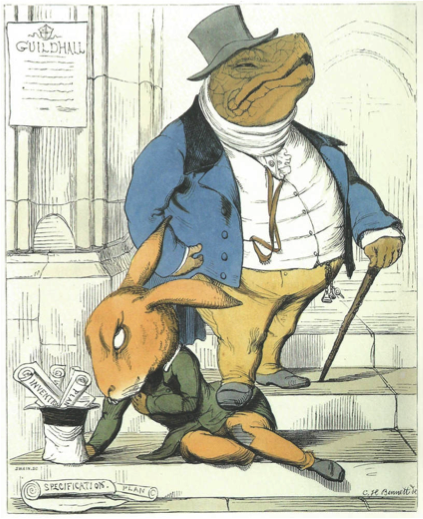We are excited to introduce our latest leadership strategy book call Quest. Please make a note of the scheduled publishing date: 23rd November 2015.
To whet your appetite here is a short extract from the book’s preface. If you would like to learn more or to register your interest to receive a copy of the book please email [email protected]
The Tortoise and the Hare
 Aesop’s fables tell a story of the tortoise and the hare who decide to race against each other. The hare is so confident of winning that he lies down halfway through and goes to sleep. The tortoise, knowing he must work hard to win, plods along without stopping until he passes the sleeping hare and wins.
Aesop’s fables tell a story of the tortoise and the hare who decide to race against each other. The hare is so confident of winning that he lies down halfway through and goes to sleep. The tortoise, knowing he must work hard to win, plods along without stopping until he passes the sleeping hare and wins.
There is an age-old adage that says: More haste, less speed. Success is the result of hard work, perseverance and dedication. This approach is favoured and rewarded across all aspects of life from education to leadership and performance management and from Wall Street to bankers, everyone looking for a steady track record of results. This mindset has become part of the lexicon of scientific management and translated into a single-minded drive towards increased organisational efficiency and effectiveness.
Aesop was a slave and storyteller who lived in ancient Greece between 620 and 560 BC. His fables have descended through the ages to modern times and been reinterpreted in both popular and artistic media. Over the years various interpretations of the fable have evolved. In 1857, Charles Bennett a Victorian illustrator and pioneering cartoonist sketched a satirical image of The Tortoise and the Hare. In the image the tortoise was depicted as a smug industrialist standing outside the Guildhall, too fat and arrogant to move but holding the hare, who is depicted as a worker or entrepreneur, prostrate under his foot.
In The True History of the Tortoise and the Hare published under the name Lord Dunsany, prolific Irish writer and dramatist Edward Plunkett suggests another interpretation of the fable. In his version the hare, recognising the stupidity of the challenge pulls out of the race. His abdication means that the tortoise wins by default. When interviewed what his victory signifies, the tortoise says, “It is a glorious victory for the forces of swiftness.” And all his followers say “nothing else for years”. According to Plunkett, the reason that this version of the race is not widely known is because “very few of those that witnessed it survived the great forest-fire that happened shortly after. It came up over the weald by night with a great wind… they hurriedly called a meeting to decide what messenger they should send to warn the beasts in the forest. They sent the Tortoise.”
Until the eighteenth century preachers, speechmakers and puritans mainly used the fables. The philosopher John Locke, who was one of the most significant Enlightenment thinkers, influenced the evolution of these fables towards a younger audience. For him Aesop’s fables were: “Apt to delight and entertain a child… yet afford useful reflection to a grown man. And if his memory retain them all his life after, he will not repent to find them there, amongst his manly thoughts and serious business.”
It is therefore not surprising that with the onset of the Industrial Revolution vast numbers of fables were published. The masters of the Industrial Revolution approved of stories propagating hard work and perseverance within a structure of control, conformity and compliance. The Tortoise and the Hare for all its sound advice was a firm favourite. Leagues of industrialists would have hard workers believing risk is a bad thing and adherence to the 3Cs − control, conformity and compliance − is rewarded.
But what if in a changing world efficiency and effectiveness are no longer the bastions of competitive advantage? Like the backers of the tortoise who shouted: “Run hard. Run hard, hard shell and hard living: that’s what has done it”, are today’s leaders making the same error believing efficiency and effectiveness to be the best way? What if what modern organisations need is more hare and less tortoise? As the CEO of industrial giant GE, Jeff Immelt says, “Ten or twenty years ago, what differentiated companies was how well managed they were. Today if you are well managed, you can still be a good company, but you’re not going to be a dominant company.”
In his book Quest, speaker and author Dean van Leeuwen argues, that the global industrialised mindset of control, conformity and compliance, focusing incessantly on efficiency, effectiveness and risk aversion now stunts growth and innovation,. He’s not saying that organisations do not need to be effective and efficient. Of course they do. What he’s saying is that it’s time to release the hare − Bennett’s cartoon − or to inspire and convince the hare to engage in the challenge − Plunkett’s version (whichever you prefer). In the twenty-first century, which has the potential to deliver so many wondrous advances, engaging people to deliver creative and disruptive innovation is going to be critical for success and gaining competitive advantage. And the best way to achieve this is through the power of the leader’s quest.
We hope you enjoyed this amuse-bouche from Dean’s latest book Quests. Over the coming weeks leading up to the launch in November we will be sharing key themes about the book.
Dean van Leeuwen is a co founder of TomorrowToday Global a consultancy that works with leaders to achieve success in a changing world. If you would like to contact Dean or book him to speak at an upcoming event please contact him on [email protected]

